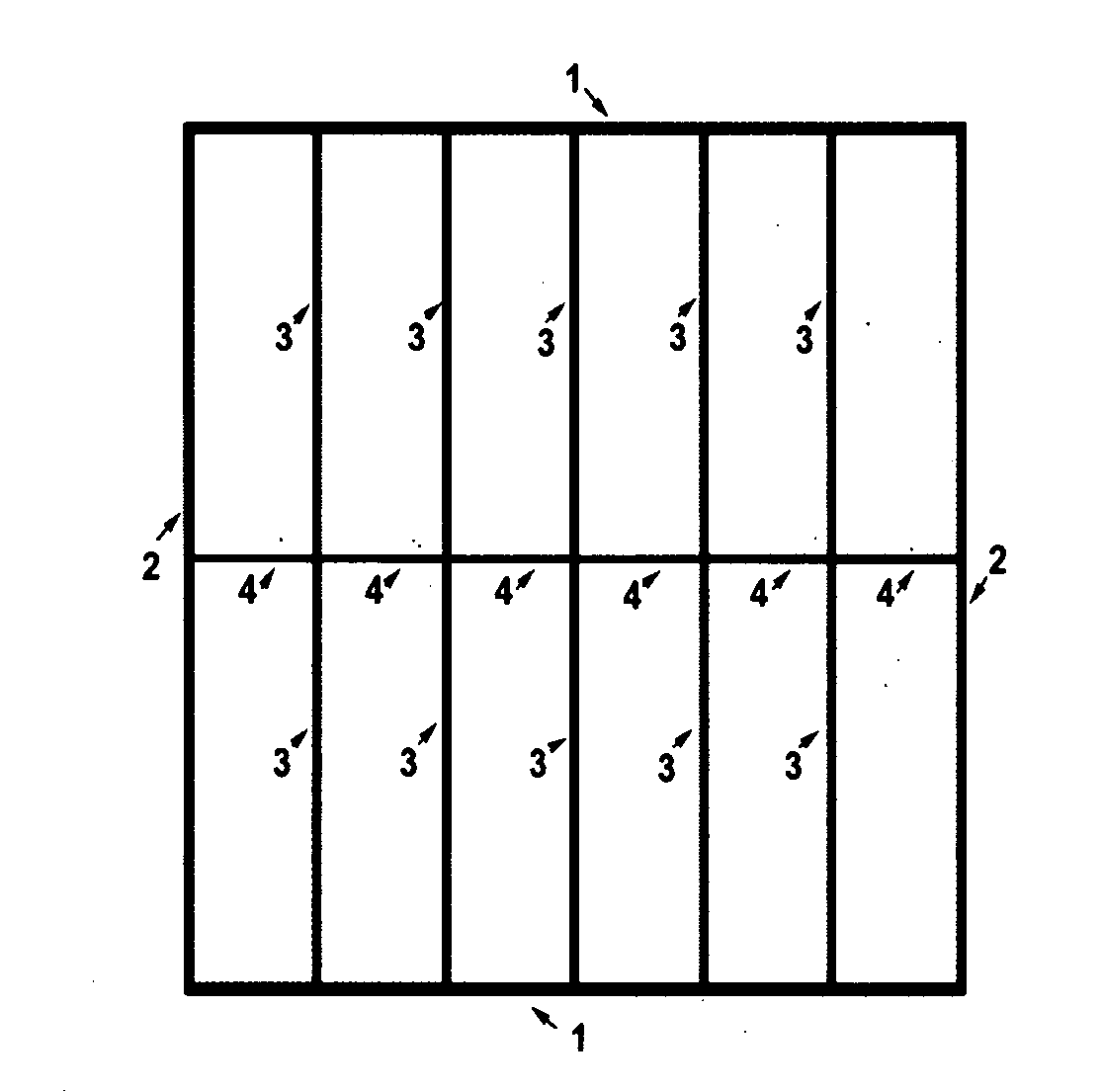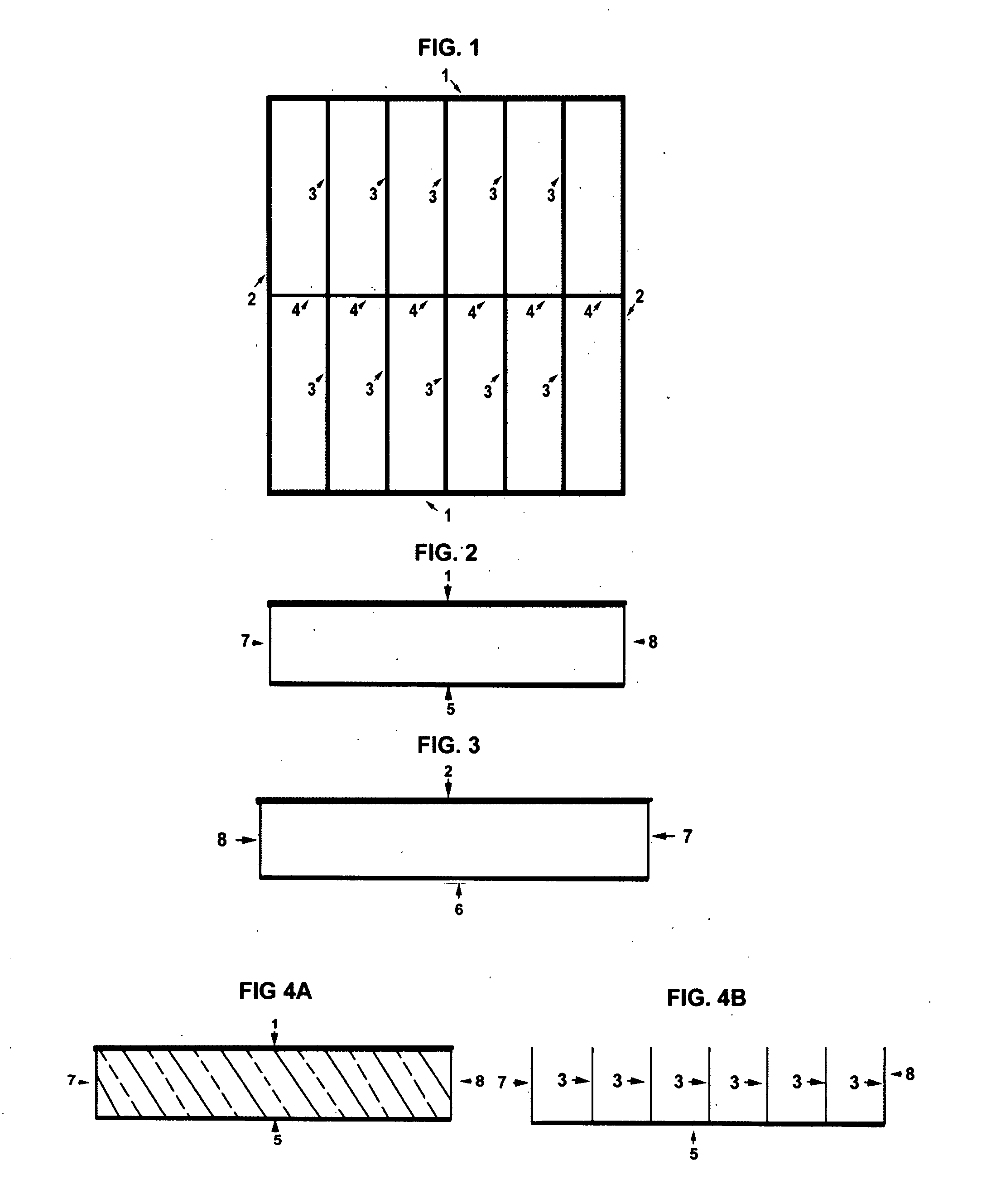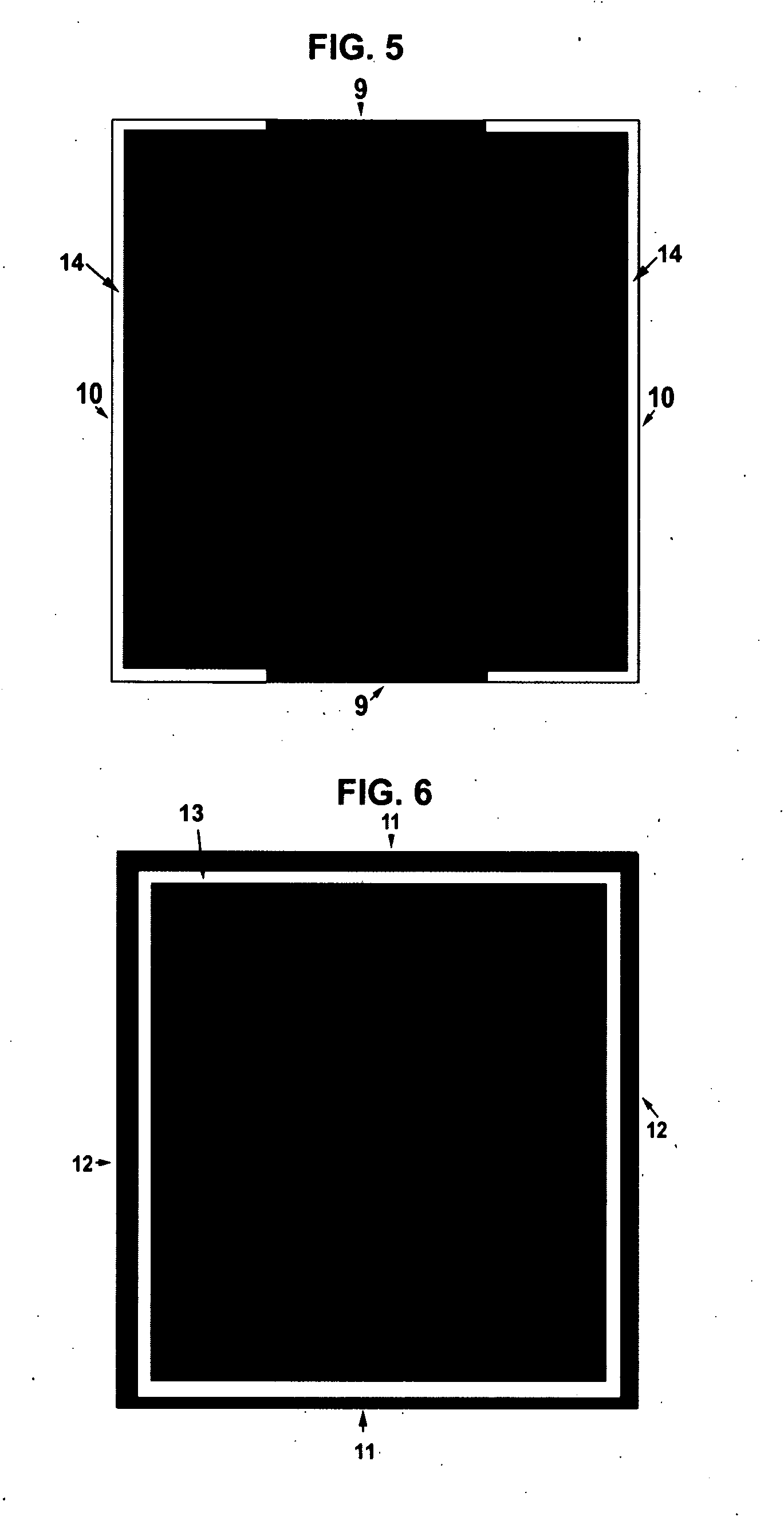Method and apparatus that increases efficiency and reproducibility in immunohistochemistry and immunocytochemistry
a technology of immunohistochemistry and immunocytochemistry, applied in the field of methods and apparatuses, can solve the problems of uneven staining, unresolved problems, uneven staining, etc., and achieve the effects of improving consistency, reducing the sensitivity of assays, and facilitating transpor
- Summary
- Abstract
- Description
- Claims
- Application Information
AI Technical Summary
Benefits of technology
Problems solved by technology
Method used
Image
Examples
Embodiment Construction
[0029]FIGS. 1, 2, 3 illustrates the top, side and end views of the container package base, without the container package lid. FIG. 4B is a cross sectional view of FIGS. 4A and 2. Said container package base has a bottom 5 and 7, that has walls outlined by 1, 5, 7, and 8 (FIG. 2), and 2, 6, 7, and 8 (FIG. 3). The container package base is partitioned into compartments by 3 and 4 (FIG. 1 and FIG. 4B). The compartments are preferably large enough to fit one standard laboratory microscope slide. FIG. 2 illustrates the side view of the container package base, with the wall outlined by 1, 5, 7 and 8. FIG. 4B illustrates a cross sectional view of FIG. 4B of the container package base, such that the compartments are visible.
[0030]FIGS. 5 and 6 illustrate a top view of the top side, and the bottom side of the container package lid. The top side (FIG. 5) has an elevated lip 14 within which the bottom 5 and 7 fit into to allow for stacking of said container packages. The bottom side (FIG. 6) h...
PUM
 Login to View More
Login to View More Abstract
Description
Claims
Application Information
 Login to View More
Login to View More - R&D
- Intellectual Property
- Life Sciences
- Materials
- Tech Scout
- Unparalleled Data Quality
- Higher Quality Content
- 60% Fewer Hallucinations
Browse by: Latest US Patents, China's latest patents, Technical Efficacy Thesaurus, Application Domain, Technology Topic, Popular Technical Reports.
© 2025 PatSnap. All rights reserved.Legal|Privacy policy|Modern Slavery Act Transparency Statement|Sitemap|About US| Contact US: help@patsnap.com



